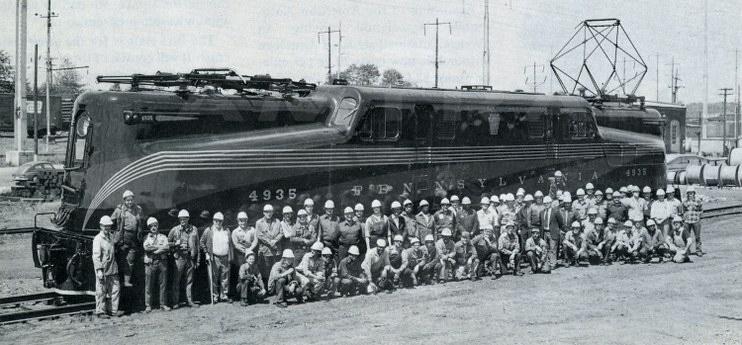With the size of the country, the distance/time factor of trains vs planes for long distance,
the advantage of cars (freedom of schedule and destination and ease of use) for local distance the reality is that Trains are NEVER going to stay popular.
The only way they even stick around at anything higher then Amtack level is going to take massive tax dollars and draconian laws that are going to piss off a lot of companies and even more people. And are not going to allowed to stand by the Supreme Court in any version of the US that is close to what we know as the US.
People just can’t seam to grasp the size of the US and how low the population density is. Even at 180 mph the distance from Michigan To Florida (for instance) is just to long to make trains attractive. And east west trains are even worse.
As for getting the railroads to electrify forget it the cost of that many miles is just prohibiting. And anything else will not sustain that kind of speed as the cost in fuel will be crazy and you have to stop to often to change engines (refueling would take just way way to long)
And the cost of high speed rail coverage for this kind of network was used bankrupt even the US. As for huge areas in the US you get a road every couple of miles at least and replacing grade crossings are ludicrously expensive, the reality is that the US about the Size of all of Europe and you would need to effectively build something close to the size of Europe’s network to cover the country. The problem is the US has about HALF the population. So even just duplicating the Eurpean system would cost the average American TWICE the money it cost Europe. And we all know that Europe puts up with a lot higher average taxes then the US does.
But... it get worse. As HUGE chunks of Europe don’t have high speed rail, Basically it exists in France, Germany and Belgium and has some lines in the rest of Western Europe but is not even close to covering Eastern Europe. Frankly it only covers the major routs even in France and Germany. So that network street echoed accos the US is going to leave large areas having to use much slower systems (you know the kind of system we got rid of because we didn’t like it)
As for the ideas of not covering everyone to save money, well that means something else has to be used so the railroad won’t be dominant in huge chunks of the US. And more importantly it won’t get funded by congress. No Congressional member from say Montana or Alaska is going to vote to spend that much money on a system that thier state doesn’t get. And congressmen from the higher population States are going to balk at spending the huge amounts to subsidize the rail network in states with low population.
Yes we kind of did that with the highway system but that started off slowly took a LONG time and has a number of other advantages. Not the least that most users only ride on it short distance for commuting.
So frankly you are never going to get trains to stay popular no matter how much you may want to unless you change the US to the point that it is no longer the US.
Keep in mind I am pro trains. I belong to a number of Railroad historical society I have ridden trains in the US and Europe and I have a large collection of train books for reasearch purposes but the reality is that Trains just don’t work for primary passenger travel in the US. And even in Europe only work because the government has passed taxes and such to support them. And even thier Cars and Airplanes give them a run
Trains DO work as the primary mode of transportation in NYC...
But aside from that, you're right that electrification won't work everywhere for passenger rail in the U.S.A. However, there are several routes (Dc-Boston, which is actually electrified otl), NYC-Chicago, San Francisco-San Diego, and possibly Seattle-Portland that have a dense enough population and short enough distances that electrification/high speed would certainly be profitable if more people actually rode them, which is pretty easy to do if you get more people living within a mile of commuter rail stations so that they can use trains to get to and from work, and visit other cities with them.
Additionally, with subsidies, a double-track electrified line from Chicago to San Francisco is doable. It will need heavy subsidies, but considering the fact that THE ENTIRE TRANS-SIBERIAN RAILWAY LINE IS FULLY ELECTRIFIED IN OTL it is certainly doable (Chicago-san fran is only half as long as the Siberian/low-density portion of the route of the TSR and has bigger cities along the route like Denver, salt lake city, and Reno, so while it wouldn't be profitable it wouldn't make too big of a loss for the more profitable routes to handle).
So while trains won't be able to cover everywhere like they used to, a Chicago-LA overnight service is quite possible ittl.
Don't forget that cities like Minneapolis, Columbus, Indianapolis, Pittsburgh, and more can be serviced by spur lines.
